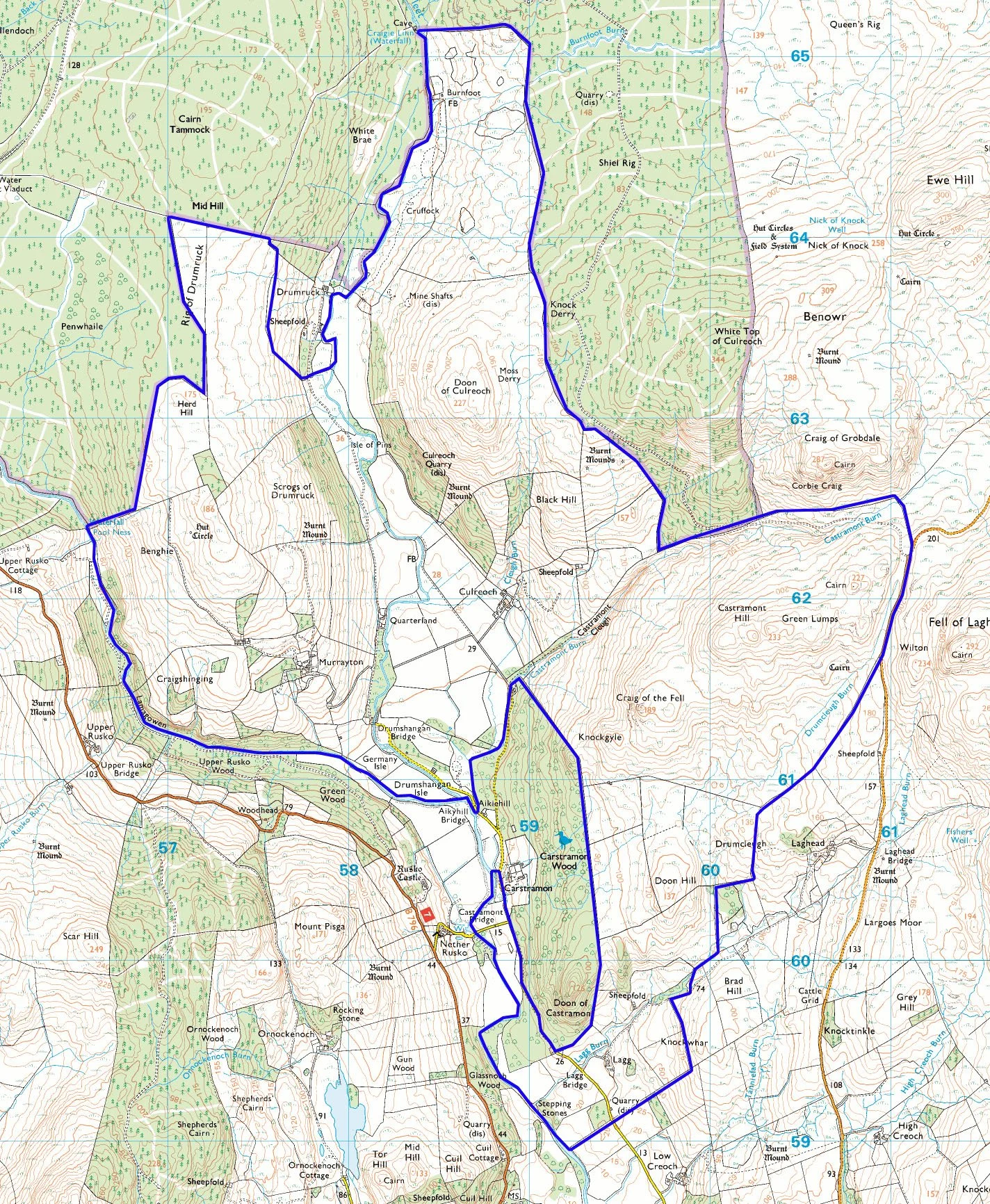
Cally Estate
The Cally Estate, in the upper Fleet Valley National Scenic Area is a special place with spectacular scenery and an amazing variety of wildlife. A special place that should be preserved.
The Estate
The Cally Estate, covering some 2,780 acres and comprising Murrayton, Culreoch and Lagg farms has been owned by the Murray Usher family for generations - a family central to the development of Gatehouse of Fleet.
In recent years it has been farmed with a light touch. The estate stopped farming the land directly and has let the land to farmers from outside the local area for grass lets. Fortunately this has resulted in a low stock density / low intensive farming which has allowed the land to regenerate. Some areas have not been grazed and trees and shrubs allowed to regrow, while many of the fields are a profusion of wild flowers.
The estate land surrounds Carstramon Wood (originally part of the estate but now a Scottish Wildlife Trust nature reserve), and also hosts a number of other woodlands, the Big and Wee Water of Fleet rivers and surrounding hills which together with the low intensity farming means the area is a haven for wildlife.
Sadly the estate is now up for sale which will mark the end of the Murray Usher involvement.
The area outlined in blue on the map indicates the land being sold.
Landscape
The estate is a vital part of the Fleet Valley National Scenic Area with a mosaic of hills, valley, woodland, rivers and fields making for stunning scenery.
Castramont Hill, Craig of the Fell, the Doon of Culreoch and the Rig of Drumruck hills have spectacular views over the estate and the lower fleet valley to Gatehouse of Fleet and the Fleet Estuary to the south, while the Clints of Dromore and Cairnsmore of Fleet provide a dramatic backdrop to the north.
Tumbling burns and waterfalls flow down the hills to the valley where they join the Little (Wee) or the Big Water of Fleet rivers before they combine to form the Water of Fleet. All the rivers are bordered by native riparian woodland.
In spring the farm fields form carpets of wild flowers on the valley floor.
Wildlife
With its wide range of habitats and low intensive farming the estate is a haven for wildlife with amazing biodiversity.
Red squirrels are still frequently seen despite the spread of greys in other areas, helped no doubt by the presence of pine martens on the estate. Hares, badgers, foxes, roe deer are all common with occasional sightings of red and fallow deer.
Bird life includes large populations of buzzards, red kites and sparrowhawks and golden eagles are occasionally seen soring over the hills. Cuckoos, woodpeckers, pied flycatchers, redstarts, skylarks and many many more are frequently seen.
Insects are flourishing with a wide range of bees, butterflies, moths, dragonflies and damselflies.
Frogs, toads, newts, lizards, slow worms and adders can all be seen.
The rivers suffered from acidification due to conifer plantations higher up the valley but are improving thanks to the efforts of the Galloway Fisheries Trust. Salmon and brown trout are spawning again, herons, cormorants and goosanders are common and dippers, kingfishers and otters are occasionally seen.


